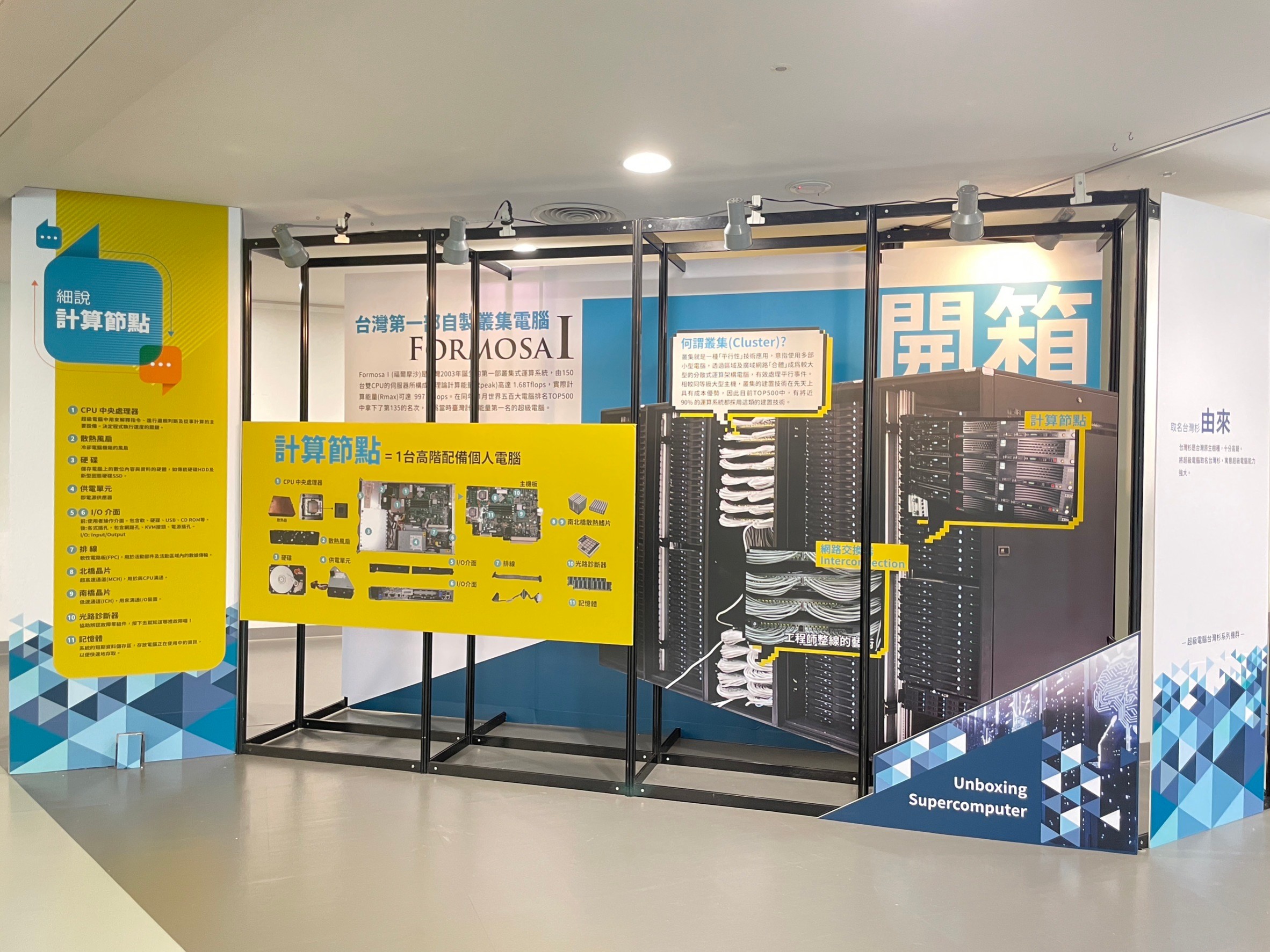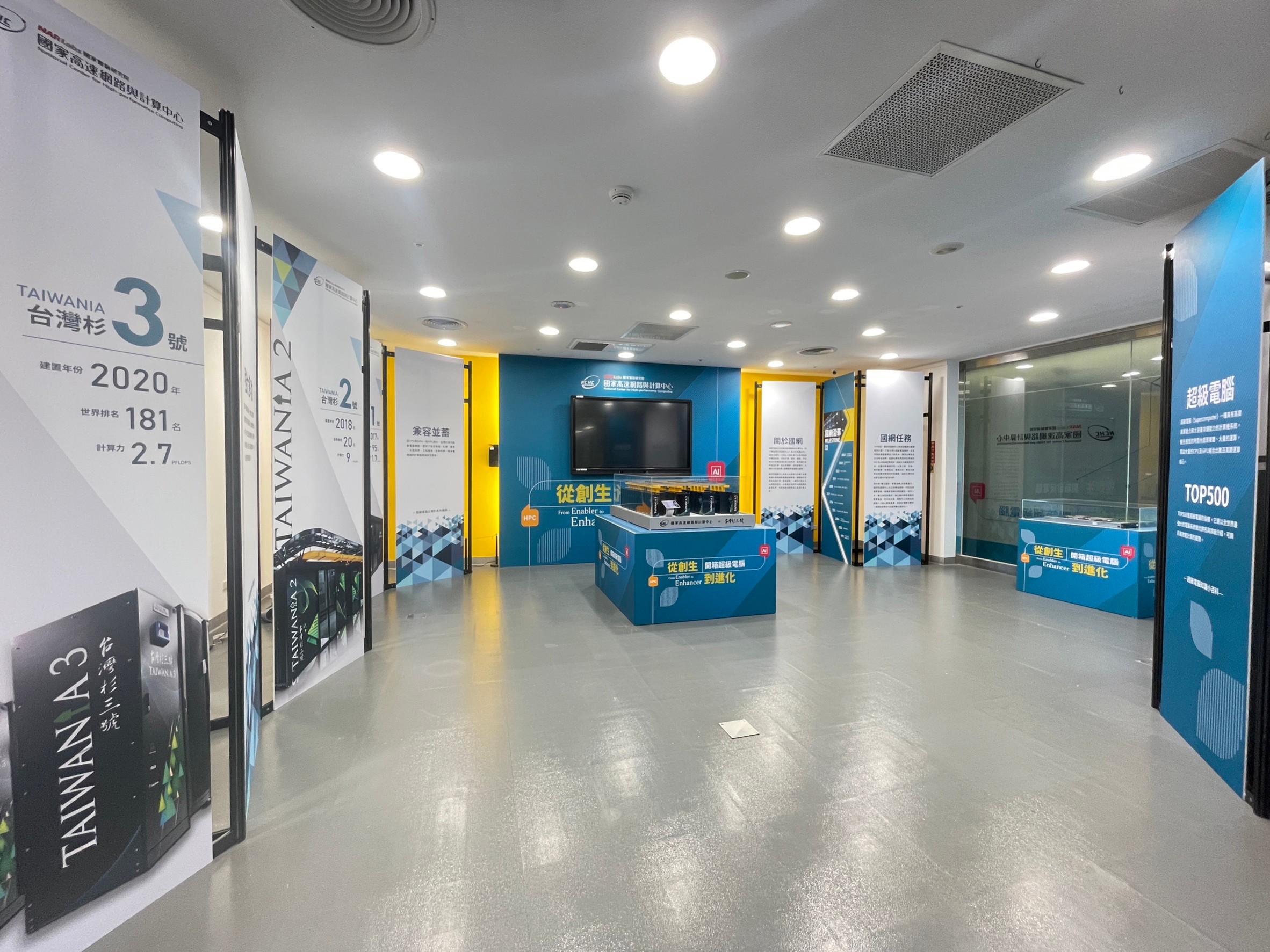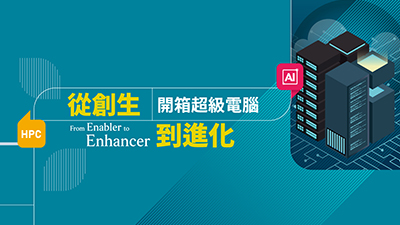The 'Unboxing National Center for High-performance Computing supercomputer' special exhibition opened on July 25
The foundations of scientific R&D these days, supercomputers possess amazing computing capabilities and huge storage spaces to process huge and complicated computing problems. The National Science and Technology Council is dedicated to developing powerful supercomputers to be used by Taiwan’s academic and research institutions. It also plans and hosts activities about popular science. The National Center for High-performance Computing of National Applied Research Laboratories(the National Center for High-performance Computing of National Applied Research Laboratories), in executing the policies of the National Science and Technology Council, collaborated with the National Library for Public Information (NLPI) to host the “Unboxing National Center for High-performance Computing supercomputer” from 7/25 to 10/29 at the digital arts center on the second floor of NLPI to allow the public a glimpse at supercomputers and learn about how supercomputers bring convenience and help to people’s lives.
The public can see, through the physical model, that the structure of supercomputers is like a huge mechanical system, which consists of many computing nodes, each with its own processor, memory, and storage space. High-speed networks connect these nodes together to form a large and cooperative system. By assembling and connecting multiple computing nodes, an efficient and high-performance computing platform is born.
In this unbox are representative supercomputers, including Formosa 1, the first cluster architecture supercomputer made by Taiwan. Born 20 years ago, Formosa 1 is the first clustered supercomputer in Taiwan, which consists of 150 dual-CPU servers with a computing capacity of 997GFLOPS. Also in Open Box are the main elements of Taiwan's high-performance computing called Taiwania supercomputers, or Taiwania 1, Taiwania 2, and Taiwania3 which feature computing capacities of 1.7PFLOPS, 9PFLOPS, and 2.7PFLOPS, respectively. Taiwania 2 is the AI host that the government has invested heavily to build to develop the artificial intelligence ecosystem, so its computing power is particularly high. The differences in performance show the progress of supercomputers: 20 years ago it could do 900 billion multiplications per second, and now it can do more than 1,000 trillion per second. Isn’t the development of high-performance computers growing by leaps and bounds?
Supercomputers have powerful computing capabilities, capable of solving many complex computing problems. By processing huge amounts of data to simulate real-life physical phenomena and even predict the future. From climate simulations to weather forecasting, from genomic analysis to new drug development, from materials design to space trip simulations, supercomputers almost do them all. Through large-scale numerical simulations and accurate data analyses, they provide the basis on which to conduct scientific research.
Supercomputers have greatly helped and brought changes to people's lives; for example, computer simulations can design safer car bodies to better protect the riders. The durations between changes of traffic light signals can also be made more efficient and safer for driving by computing. Supercomputers are also indispensable for animated special effects in movies, making creative entertainment more exciting. Applications of artificial intelligence require supercomputers, chatbots, voice assistants, and intelligent driving all require the support of high computing power.
Note 1: FLOPS is an acronym for Floating-point operations per second, i.e., the number of floating computing operations performed per second. Floating computing is the four decimal computing, commonly used to measure the speed of computer computing. 1GFLOPS is 1 billion floating computing per second, and 1PFLOPS is 1,000 trillion floating computing per second.

Beginning on 7/25, the National Center for High-performance Computing of National Applied Research Laboratories exhibits at the National Library of Public Information.

Beginning on 7/25, the National Center for High-performance Computing of National Applied Research Laboratories exhibits at the National Library of Public Information. The whole view of the NCHC exhibit
 國家高速網路與計算中心
國家高速網路與計算中心
